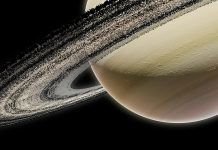
For the first time, scientists have confirmed that tiny bursts of electricity are happening in the atmosphere of Mars.
These sparks were picked up by the microphone on the SuperCam instrument, which is attached to NASA’s Perseverance rover.
The discovery happened by accident, when the microphone recorded unusual signals from the heart of two spinning dust devils on the Martian surface.
After carefully analysing the recordings, researchers from several French research institutions realised that the signals were both acoustic and electromagnetic in nature.
In simple terms, they were the sound and signature of small electric discharges — similar to the tiny static shocks people sometimes feel when touching a metal door handle in dry weather.
For many years, scientists had suspected that this type of electrical activity could happen on Mars, but this is the first time it has been directly observed.
The sparks are created by friction between fine dust particles as they swirl through the air. As these tiny grains rub against each other, they build up an electric charge.
Once the charge becomes strong enough, it is released as a small electric arc, only a few centimetres long. This process is also accompanied by a sharp shock wave that can be detected as sound.
On Earth, dust particles can also become electrically charged, especially in deserts and during sandstorms. However, real discharges are rare.
Mars has a much thinner atmosphere, made mostly of carbon dioxide, which means it takes far less energy for a spark to form. This makes electrical activity in dust storms more likely on the Red Planet than on Earth.
This discovery is important because it changes how scientists think about the chemistry of the Martian atmosphere.
Electrical discharges can help form powerful, oxidizing chemicals that may destroy organic molecules on the surface. They could also break down gases in the atmosphere, possibly explaining why methane on Mars seems to disappear so quickly — a mystery that has puzzled researchers for years.
The findings also suggest that electrical charging in dust storms could influence how dust moves around the planet, affecting Mars’s climate and weather patterns.
In the future, these electrical effects might even pose a risk to robots and human explorers by interfering with electronic equipment.
Since landing in 2021, SuperCam’s microphone has recorded over 30 hours of Martian sounds — including wind, the Ingenuity helicopter, and now, sparks in the sky.
This proves that listening to other planets can reveal important new secrets about their environments.



